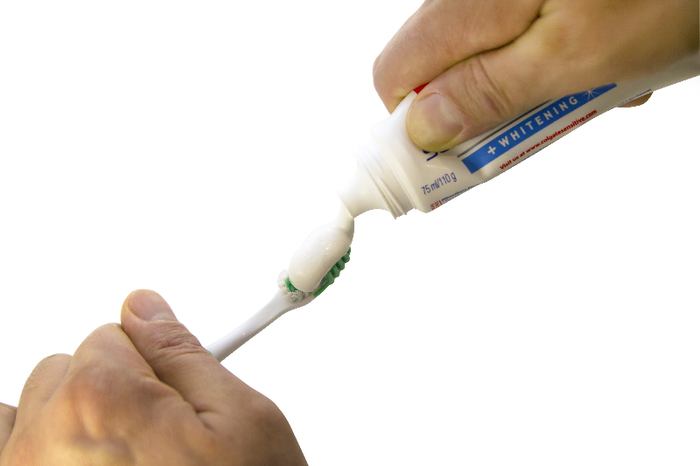- Calls to this hotline are currently being directed to Within Health or Eating Disorder Solutions
- Representatives are standing by 24/7 to help answer your questions
- All calls are confidential and HIPAA compliant
- There is no obligation or cost to call
- Eating Disorder Hope does not receive any commissions or fees dependent upon which provider you select
- Additional treatment providers are located on our directory or samhsa.gov
How to Reverse Dental Damage Caused by Bulimia Nervosa

Bulimia nervosa is an eating disorder characterized by an individual binging on more food than is typical within a discrete period of time and then using compensatory behaviors to rid the body of calories consumed.
One of the most common compensatory behaviors is purging calories through vomiting. Vomiting is actually a survival mechanism of the body intended to protect it from threats. When the body detects a substance has been ingested that is causing pain or distress, vomiting is one of the mechanisms the body may use to expel this substance. This should not happen consistently, as the body is not created to withstand consistent expulsion through vomiting.
Engaging in purging behaviors through vomiting multiple times per day for many days in a row has harmful impacts on numerous bodily processes. In this article, we want to focus on one of these areas—the teeth.
How Does Vomiting Affect Teeth?
As mentioned above, vomiting, whether as an eating disorder behavior or bodily mechanism, is not intended to be a consistent experience one goes through. When a person vomits, along with the food that is expelled comes acid and bile.
This acid breaks down and wears away at the enamel on the teeth. The enamel of the tooth is a thin, but strong, layer that acts as the first line of protection for the nerves and cells that are inside of the tooth.
When the enamel of a tooth is compromised, the layer beneath, called “dentin,” becomes accessible. Dentin is made of microscopic tubes that communicate signals from the surface of the tooth to the nerves within. Dentin is also softer than enamel, making it more vulnerable to erosion and damage from acid. This means that, if vomiting behaviors wear down the enamel of a tooth to expose the dentin and vomiting behaviors continue, the sensitive dentin is more easily damaged.
With both enamel and dentin damaged, teeth are more likely to chip due to becoming brittle. Additionally, the nerves of the tooth are more exposed and this can lead to nerve damage.
Vomiting, and the impact acid has on the teeth, also changes tooth color and/or texture. Teeth become yellowed and, sometimes, might even become clear in appearance. Additionally, their texture becomes more porous in appearance.
Beyond the teeth, “high acid content can also wear away gingival tissue in your mouth and can leave painful sores. Sometimes gingival surgeries are required to repair the missing tissue [1].”
Individuals with bulimia are more prone to oral infections as well [1].
Treating Dental Decay
One study aptly summarizes the impact vomiting can have on tooth, stating that “Oral symptoms related to bulimia nervosa that have been described in case reports, descriptive studies, and case-control studies include enamel erosion, dental caries, dental pain, orthodontic abnormalities, xerostomia, reduced saliva secretion, parotid enlargement and dysphagia, among others.” [2]
This article also reports that all of the symptoms listed above are reversible except for 2—dental caries and tooth erosion [2].
Tooth enamel is not living tissue meaning once it is worn away, it does not regenerate. When tooth enamel is gone, it is gone for good.
If someone has experienced dental decay due to vomiting behaviors, a key part of their treatment and recovery should involve including a dental professional as part of their treatment team. This professional cannot replace the enamel lost, however, they can provide treatments to strengthen the remaining tooth structure.
Onesuch treatment is known as “re-mineralization.” When toothpastes or mouthwashes are advertised as benefiting tooth enamel, this is what they are referring to. These products put calcium and phosphates back into the tooth to harden the remaining enamel.
Dentists might also use composite filling restorations, porcelain laminates, and/or crowns.
Some cases may be so severe they require pulling the teeth that are too decayed and replacing them with implants.
What Can be Done at Home?
The number one thing any individual can do to cease further dental decay and damage is to cease vomiting behaviors. Obviously, this is not an easy feat, however, it is the most impactful action one can take for their dental health.
If vomiting behaviors continue, dental decay will continue as well.
Even so, recovery is not linear and individuals often struggle with moments of lapse or relapse. In this case, there are some behaviors you can engage in that will reduce, but not eliminate, dental damage such as drinking water immediately after vomiting to rid the mouth of any residual acids.
Additionally, using products that include high amounts of calcium, phosphate, fluoride, etc. can help to strengthen the remaining enamel in the mouth.
The organization ProNamel, which creates products intended to support the remineralization process, gives a few recommendations on actions individuals can take themselves.
Increasing Saliva Production
ProNamel recommends increasing saliva production, stating that “essential components in your saliva—such as calcium and phosphate—can neutralize harmful acids and help restore minerals lost because of acids in your diet. Saliva is also your body’s natural defense against cavities [3].”
This article also recommends drinking more water that contains fluoride and rinsing the mouth with fluoridated tap water after eating or drinking acidic foods [3].
Improving Your Diet
Further, the article encourages a nourishing diet that includes foods with dairy products such as milk, cheese, and yogurt [3].
Follow a Daily Dental Routine
Individuals should also engage in their recommended daily dental routine which typically involves brushing and flossing the teeth 2 times per day.
Can Dental Decay from Bulimia Be Reversed?
The unfortunate truth is that, while the body is a resilient and self-healing machine, there are limits to what it can do. So much of the physical damage caused by disordered eating behaviors can be healed through recovery, however, dental damage is not one of those areas.
The good news is that, while enamel cannot be regrown, what remains can be strengthened given the proper care from dental professionals and the individual themselves. Practice honesty with your dental professional so that they can help you make the most informed decisions regarding your oral health.
Resources
[1] Russ, S. (2016). Bulimia teeth damage. Mirror, Mirror – Eating Disorder Help. Retrieved from https://mirror-mirror.org/bulimia-teeth-damage [2] Bretz, W. A. (2012). Oral profiles of bulimic women: diagnosis and management. What is the evidence? Journal of Evidence-Based Dental Practices, 2:4. [3] Unknown (2022). What is remineralization? How to remineralize your teeth. Pronamel. Retrieved from https://www.pronamel.us/tooth-enamel/enamel-remineralization/.The opinions and views of our guest contributors are shared to provide a broad perspective of eating disorders. These are not necessarily the views of Eating Disorder Hope, but an effort to offer discussion of various issues by different concerned individuals.
We at Eating Disorder Hope understand that eating disorders result from a combination of environmental and genetic factors. If you or a loved one are suffering from an eating disorder, please know that there is hope for you, and seek immediate professional help.
Published on November 7th, 2022 and reviewed by Jacquelyn Ekern, MS, LPC
Published on EatingDisorderHope.com

